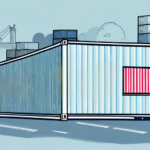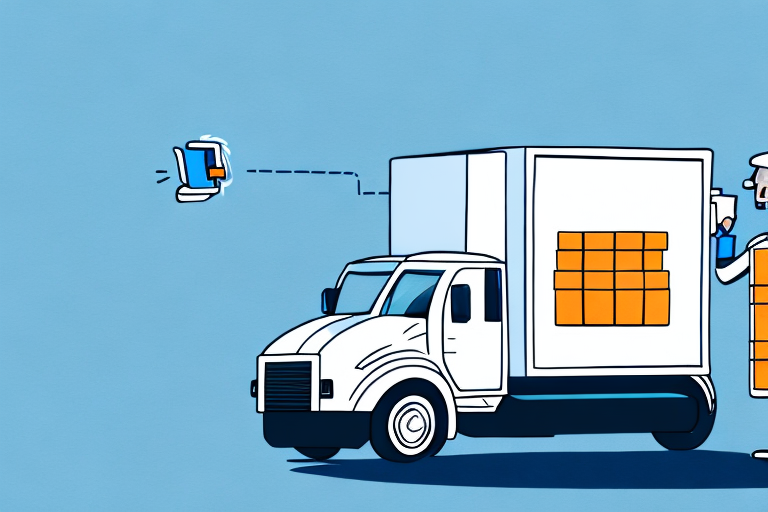How to Use POD (Proof of Delivery) for Improved Logistics Management
In the dynamic field of logistics, ensuring that packages reach their intended recipients is paramount for success. Proof of Delivery (POD) serves as a crucial document—whether digital or physical—that verifies the delivery of goods. Implementing POD can significantly enhance logistics management by offering greater visibility, increased accuracy, and improved customer satisfaction. This comprehensive guide delves into the importance of POD, best practices for its implementation, and the latest trends shaping its future.
The Importance of POD in Logistics Management
POD provides tangible evidence that a package has been successfully delivered, ensuring that logistics managers can verify timely and accurate deliveries. This verification helps maintain transparency throughout the delivery process, reducing disputes and fostering positive customer relationships.
By leveraging POD data, managers can monitor shipment progress, identify potential delays, and take corrective actions to ensure on-time arrivals. This visibility not only optimizes delivery routes and schedules but also leads to cost savings and enhanced operational efficiency.
Moreover, POD serves as a quality control tool. By cross-referencing POD data with original order information, managers can confirm that the correct items were delivered to the right recipients, minimizing errors and reducing the likelihood of returns or exchanges. [Source]
How POD Can Help Improve Supply Chain Efficiency
Implementing a POD system streamlines logistics operations by providing detailed information on delivery dates, times, and recipients. This data allows logistics managers to optimize processes and allocate resources more effectively, resulting in reduced resolution time for delivery disputes and enabling focus on higher-priority tasks.
Enhancing customer satisfaction is another significant benefit. Real-time updates and visibility into the delivery process build customer confidence and loyalty, driving repeat business. According to a 2023 Logistics World report, companies utilizing POD systems have seen a 15% increase in customer retention rates.
POD systems also mitigate the risk of lost or damaged shipments by requiring confirmation upon delivery, such as a signature. This requirement not only prevents disputes but also reduces the need for costly investigations into lost or damaged items.
Understanding the Different Types of POD Systems
POD systems vary widely, including electronic or digital-based, paper-based, mobile app-based, and barcode-based systems. Each type offers distinct advantages tailored to different business needs.
- Electronic/Digital-Based: These modern systems provide real-time tracking and data analysis through electronic signatures and GPS integration, facilitating seamless integration with other logistics software.
- Paper-Based: Traditional and cost-effective, paper-based systems involve physical delivery notes signed by recipients. However, they are susceptible to data entry errors and processing delays.
- Mobile App-Based: Utilizing smartphone applications, these systems offer flexibility and real-time updates, enhancing the accuracy and efficiency of delivery tracking.
- Barcode-Based: Incorporating QR codes or other barcode technologies, these systems streamline the delivery process by enabling quick and accurate tracking of shipments.
Choosing the right POD system requires an assessment of business operations and specific logistical requirements. Learn more about POD system options.
Benefits of Implementing a POD System in Your Logistics Operations
Adopting a POD system offers multiple advantages beyond delivery confirmation:
- Increased Transparency: Provides clear visibility into the delivery process, enabling better oversight and accountability.
- Enhanced Customer Satisfaction: Ensures timely deliveries and accurate order fulfillment, fostering trust and loyalty.
- Operational Optimization: Improves route planning and resource allocation, leading to cost savings and increased efficiency.
- Data Accuracy: Reduces errors through precise data capture, facilitating informed decision-making.
Additionally, a POD system allows for the tracking and monitoring of delivery personnel performance, identifying areas for training and improvement. The use of electronic signatures and real-time data capture minimizes the risk of lost or misplaced documents, cutting administrative costs and saving time.
Step-by-Step Guide to Implementing a POD System
- Analyze Current Operations: Assess existing logistics processes to identify areas where a POD system can bring improvements.
- Select the Appropriate POD System: Choose a system that aligns with your business needs and operational requirements.
- Build an Implementation Team: Assign clear roles and responsibilities to manage the deployment of the POD system effectively.
- Develop an Implementation Timeline: Establish milestones and deadlines, including contingency plans for potential delays.
- Train Staff: Ensure that all personnel are adequately trained to use the new POD system.
- Integrate with Other Systems: Connect the POD system with inventory and transportation management systems for seamless operations.
- Monitor and Optimize: Continuously assess the system’s performance and make necessary adjustments to enhance efficiency.
Successful implementation hinges on strategic planning, effective communication with stakeholders, and ongoing training. For a detailed implementation plan, visit our POD Implementation Guide.
Best Practices for Using POD in Logistics Management
To maximize the benefits of POD in logistics management, consider the following best practices:
- Accurate Data Entry: Ensure all necessary fields in the POD are completed accurately and promptly.
- Regular Monitoring: Continuously monitor and verify data within the system to maintain accuracy.
- Utilize Electronic Signatures: Adopt electronic signature capture to streamline the delivery confirmation process.
- Proper Document Filing: Organize and store each delivery’s POD appropriately for easy retrieval.
- Comprehensive Training: Train all relevant stakeholders, including drivers and logistics personnel, to effectively use the POD system.
Integrating POD with other systems, such as inventory management and transportation management, further streamlines logistics operations. Additionally, having a contingency plan for system failures ensures that deliveries remain timely despite potential disruptions.
Challenges and Solutions for Implementing a Successful POD System
Implementing a POD system can present several challenges, including:
- Staff Resistance: Overcome resistance through effective communication and demonstrating the system’s benefits.
- Compatibility Issues: Ensure hardware and software compatibility by collaborating with reliable providers.
- Data Privacy Regulations: Comply with data protection laws by implementing secure data handling practices.
- Resource Allocation: Allocate sufficient resources for system management, including hiring and training staff.
Addressing these challenges requires meticulous planning, continuous training, and collaboration with technology partners. The long-term benefits of a robust POD system—such as increased efficiency and accuracy—often outweigh the initial implementation costs.
Common Mistakes to Avoid When Using POD in Logistics
Avoiding common pitfalls can ensure the effectiveness of your POD system:
- Inaccurate Data: Prevent data inaccuracies by implementing validation checks and regular audits.
- Insufficient Training: Provide comprehensive training to all users to ensure proper system utilization.
- Poor Document Storage: Utilize secure and organized storage solutions for all POD documents.
- Neglecting Technology Integration: Integrate POD with existing systems to enhance overall logistics efficiency.
Leveraging technology solutions such as electronic signature devices, barcode scanners, and cloud-based storage platforms can minimize human error and streamline the POD process.
How Technology can Enhance the Use of POD in Logistics Management
Advancements in technology, including GPS tracking and real-time data collection, have transformed POD systems, offering enhanced visibility and accuracy in delivery tracking. These technologies enable better communication with customers and automate various logistics operations, reducing errors and freeing up personnel for more strategic tasks.
One significant benefit is route optimization. Advanced algorithms and machine learning can analyze data to identify the most efficient delivery routes, saving time and reducing operational costs. Additionally, optimizing routes contributes to lowering the carbon footprint of logistics operations.
Real-time updates to customers, facilitated by mobile apps and SMS notifications, provide transparency and build trust. According to a Tech Logistics 2023 report, companies using real-time POD updates have seen a 20% increase in customer satisfaction.
Case Studies: Examples of Companies that Successfully Use POD for Improved Logistics Management
Several global companies have effectively implemented POD systems to enhance their logistics management:
- FedEx: Their Delivery Manager system uses electronic POD to increase delivery visibility, reduce disputes, and maintain strong customer relationships.
- DHL: The Parcelcopter system employs drone technology and barcode-based POD systems to deliver medical supplies to remote areas, achieving high accuracy and speed.
- Amazon: Utilizing advanced POD systems integrated with their fulfillment centers, Amazon ensures timely and accurate deliveries, enhancing overall customer experience.
These case studies illustrate how effective POD implementation can lead to significant improvements in logistics operations.
Future Outlook: Trends and Innovations in the Use of POD in Logistics
The future of POD in logistics management is poised for innovation, driven by emerging technologies and evolving industry demands:
- Blockchain Technology: Enhances transparency and security in POD transactions by providing immutable and decentralized records.
- Smart Contracts: Automate delivery confirmations and payments, reducing the need for manual interventions.
- Artificial Intelligence: Improves route planning and predictive analytics, further optimizing logistics operations.
As these technologies advance, POD systems will offer even greater levels of accuracy and transparency, helping logistics managers stay competitive in a rapidly evolving landscape.
In conclusion, implementing a POD system is essential for enhancing logistics management operations. By adopting best practices, overcoming common challenges, and integrating the latest technologies, logistics managers can achieve higher customer satisfaction, increased efficiency, and reduced operational costs. Staying abreast of future trends will ensure that logistics operations remain robust and competitive in the years to come.






















